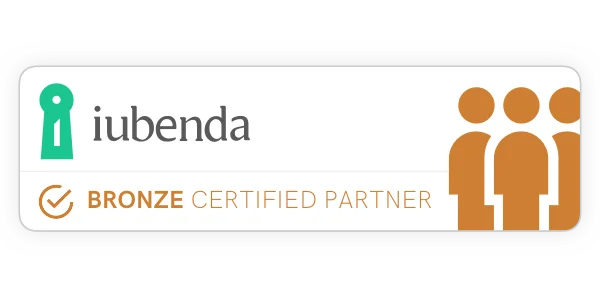As many as 80% of online users between 25 and 34 years old also buy products and services from other European countries.
This is precisely one of the most notable advantages of digitalisation.
Today you have the ability to expand the market beyond the individual location and reach customers dispersed throughout the world.
Shopify , the platform dedicated to e-commerce, guarantees a system to spread your online presence and your business internationally, thus breaking down the walls of space and time.
But how is all this feasible?
Creating a multilingual site !
Let's see together what it is, how it is made and why it is essential to have one.
What is a multilingual site?
When we talk about a multilingual site , we are essentially referring to a web page that offers multiple languages, in addition to the default one, to be easily navigable from any foreign country and by any foreign user.
The site is the same graphically speaking, the only thing that changes is the language in which the contents can be consulted.
Usually we tend to choose English as a secondary language, but very often it turns out to be insufficient or unsuitable for our business.
In fact, there are countless countries that have embarked on this digitalization process today, including Asia, Latin America and Africa.
Therefore, languages such as Spanish, Chinese, Arabic, Russian and Japanese can also be placed on your own page.
To understand which language to include, you need to study your market and perform an analysis of your site, in order to understand which countries access it most frequently.
As we have already mentioned, Shopify has introduced innovative technology that allows you to create multilingual websites and spread commerce globally.
Everything is very simple and cheap, often even free.
Let's try to understand how it works and how to make it happen!
How to create a multilingual site with Shopify
Before starting to understand how to offer a user-friendly page to any customer, it is good to ask yourself whether it makes sense to manage multiple Shopify stores in different languages.
For example, if you don't want to consider selling your products in foreign countries, it is completely useless to expand your site from a linguistic point of view.
If, on the other hand, you intend to take your first steps on a global scale, then it is time to implement a commercial strategy that is in line with your company objectives.
First you need to open a Shopify plan that has the option to sell in multiple languages.
Next you need to access the Shopify settings and set the languages you want to use for your site.
Now it's time to translate our content.
How to do?
Simply install a translation application that is compatible with the selected theme.
You can choose whether to translate texts automatically or manually .
Naturally the first choice will be the cheapest and easiest to use, but unfortunately it must be used with care, as it does not guarantee an excellent result.
It would therefore be more appropriate to prefer a professional and high-quality translation.
Returning to the apps, there are many available ones.
We report some examples such as Langify , Translate my Store , Weglot Translate and Langshop .
They all have more or less the same functionality: they allow the import and export of translations, the insertion of a language selector , the addition of a switch button to insert into the pages to change the language, etc.
Finally, if you are in doubt about which information to translate, know that, whatever the recipient in question, it is advisable to communicate the company mission and core values , clearly describe what you have to offer, make the contact information visible and be clear and concise .
It's not just a matter of translations, it's also important to adapt the contents, topics, style and tone of voice to the culture of the target language.
Each country is different and we must remain consistent with their way of doing and speaking .
But so... is it really that important to have a multilingual site?
So far we have come to the conclusion that users prefer to read the contents of a site in their native language.
Therefore, if we want to expand our commercial activity to more parts of the world, beyond the local area we occupy, we must exploit the potential that a multilingual site offers.
In addition to this, however, it is clear that having a web page in multiple languages includes other advantages.
Let's see them together:
- Increase in traffic : considering that over 60% of customers do daily searches online, consequently having a web page available in multiple language versions will help more people access it. In this way, any person of any culture can view the site and understand what it has to offer. This will generate more hits and views.
- Customer loyalty : those who visit the site not only have the opportunity to observe and understand it, but they can also purchase from it. This is because Shopify offers an international payment service which, thanks to its native payments solution, accepts payments from all major international credit cards. This is an advantage that guarantees business success in terms of loyalty and conversions.
- Enhancement of reputation : by exporting your goods and services abroad you will have the opportunity to increase your notoriety and authority, demonstrating that you have professional and commercial skills.
These are just the initial results.
Creating a multilingual site takes time and effort. But the satisfaction you get from seeing your customers satisfied and your goals achieved is priceless.
Do you also want to expand your market abroad with a multilingual site?
Gilbi.co has the solution for you! Book free assistance with one of our consultants.











Leave a comment
All comments are moderated before being published.
This site is protected by hCaptcha and the hCaptcha Privacy Policy and Terms of Service apply.